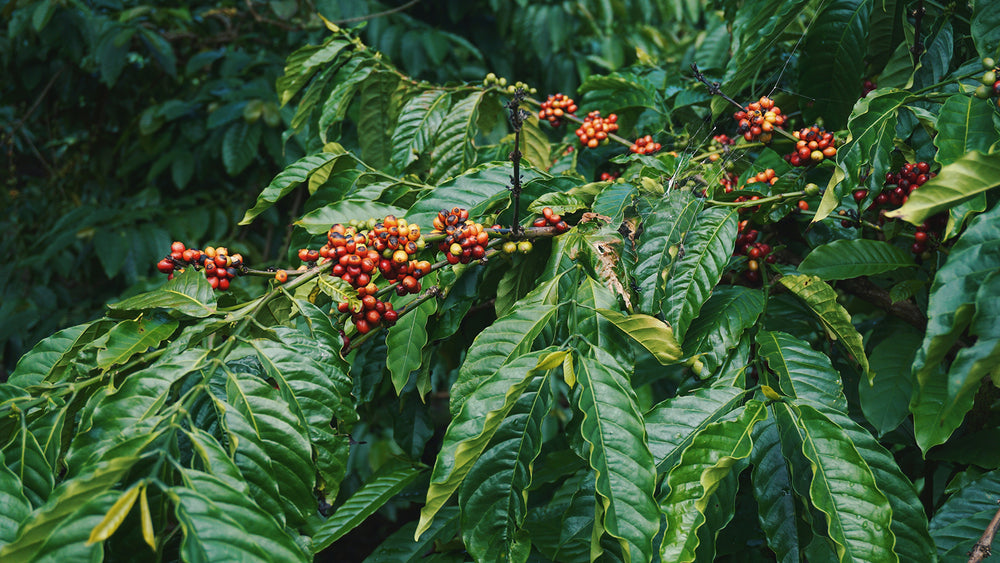Are you confused how single-origin beans are different from other coffees? Would you like to know more about their flavours? Are you looking to try single-origin beans but are not sure where to start?
In this guide on how to find and buy single-origin coffee, we have all the answers to these questions, and more.
What exactly is single-origin coffee?
When browsing coffee packaging, you’ll usually spot either the words ‘single-origin’ or ‘blend.’ What’s the difference?
A blend is a mix of coffees from various origins. This means it combines beans from different farms and perhaps even different countries.
Single origin, on the other hand, means that all the beans contained in the pack likely come from just one farm. They might even come from one smaller part of a large farm. Occasionally, single-origin refers to a localised cooperative of farmers pooling their beans. Either way, single-origin coffees come from a very specific place.
If the packaging you’re looking at is ambiguous, then look to see if it names a single farm or estate. That would suggest it is single-origin. If it names a whole country or region, it’s probably a blend of beans harvested from several farms across a wide area.
Which is best, single-origin or blend?
You might now be wondering what difference this makes. Is single-origin better than a blend? While many coffee aficionados tend to opt for single-origin, there’s no definitive answer to this question. It depends on the quality of both. Let’s explore each a little more.
Blends have an important place in the coffee world. Blends allow coffee retailers and cafes to be consistent in their offerings. By mixing coffees, they can get a reliable and often delicious ‘house blend’ product that people return to time and time again. However, if you only ever drink blends, you are definitely missing out.
Get started on tasting a few types of beans and you’ll soon see that no two single-origin coffees are the same. That’s because each coffee is very much affected by the place and way that it is grown. Climate and altitude are influential. The variety of coffee plant (there are well over 100 subspecies) is also crucially important to the flavour. Finally, how the beans are processed, roasted and even the picking method can have an impact.
How to find a great single-origin coffee
There is so much potential for individuality with single-origin. There’s a whole world of them out there to explore. From lighter, fruitier coffees, to rich and dark brews, there are bound to be plenty of coffees out there for you to savour.
Not sure where to start? Here are some ideas.
Start with a flavour profile
At Three, we like to arrange our coffees by flavour profile. Many of our customers have a preferred style of coffee and this makes it easier for them to find another coffee they’re going to love.
We use three colours as they can intuitively tell you a lot about the flavour within: green, brown and purple.
Green coffees are fresh and lively. They might have a hint of citrus or tropical fruit. They are also light, sweet and a little more acidic than some others.
Browns are well-balanced, mellow coffees. They might hint at nuttier, caramel or chocolate flavours. These coffees work well with milk as well as served black.
Purples are the heaviest, richest of our coffees. They are indulgent and packed full of dark fruit or berry flavours.
Explore a variety of the coffees within a single country
New to specialty coffee and not yet sure what flavour profile you like best? Then go on an adventure and enjoy sampling coffees from a single country. You’ll be surprised by their diversity. Take Colombia, for example.
Try the sweet and vibrant Colombia Sedna Washed. It gets its flavour from the unique growing conditions on a micro lot high in the Andes where the plants mature more slowly. Its flavour is also influenced by the ‘washing’ process. This means that the coffee fruit is cleaned of various unwanted parts before drying.
A Colombian coffee with a very different flavour profile is Colombia Disco Carbonic Natural. While this is also from the Andes, the different production methods used make for a fruity, floral flavour. The carbonic maceration process used here involves placing the coffee fruit into an airtight barrel and adding CO2 which helps break down pectins for a fruit-like flavour.
Shop with sustainability and fair trade in mind
One of the greatest advantages of single-origin coffee is its transparency. You can see exactly where the coffee is from and often learn a lot about the farming methods and values used. This means you can support some great projects with your purchases.
For example, you can buy geisha coffee from Guatemala that comes from a farm set amidst a vital rainforest preserve. The Palmita family pays special attention to the ecology of their Finca La Rosas farm. This respect for the environment also produces a deliciously unique deep, plum-like coffee.
SHOP THIS COFFEE









Leave a comment